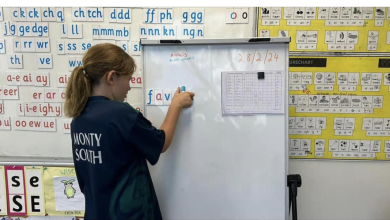Adam Voigt on ‘falling in love with hierarchy again’

This week, Adam Voigt reflects on the true place of hierarchy within the management structure of the school. When does a clear leader need to be visible and accountable? Is there a place for flat leadership structure in schools?
I love a good model – no not that kind! What I mean is that, as a visual person, I’ve come to rely heavily on models to remind me of the good practice, the core business, and the purpose that I chose for myself before the omnipresent pressure and emotion of working in a school threaten to distract me.
Models are tools of reflection and adjustment. Importantly, this distinguishes them from tools of judgement or accountability. They are merely a consistent and unblinkingly honest mirror held up against ourselves and our work.
Others needn’t always know about your models, because they won’t see what you see. But having a model, a figurative mirror, is critical to the task of effective school leadership. In much the same way that the task of applying make-up or shaving in the morning requires a mirror (because to reflect on nothing would yield a rather unattractive result – a professional model allows you to be at your best more often.
Nevertheless, my journey to model appreciation hasn’t always been smooth. I remember full well a seminar I attended about school leadership where the presenter drew a large circle on the whiteboard and knowingly eyeballed us asking where the leader was in this odd, circular organisation. Of course, as is customary, we all scrambled for what the “right” answer might be before wondering at all about the futility of the question itself.
“An army of sheep led by a lion is better than an army of lions led by a sheep.”
— Alexander the Great
We wondered aloud whether the leader was supposed to be positioned in the centre of the circle, on the line or even outside the circle looking in. The presenter smugly then informed us that the leader could be “anywhere” as thought this would be a lightbulb moment for us. It wasn’t. But I guess you can now at least know the answer in case this little pearl of leadership genius presents at your next leadership conference.
It sounds all well and good – to be anywhere in your school. Until that is, you are required to perform leadership tasks that are specific to your role alone. As a new principal in a challenging community, I was once hastily informed by a parent that another parent – a large, drunken man – had told her he was about to go down to the school and beat the living daylights out of our female year one teacher, a graduate who stood little more than five feet in height. Let me tell you, she didn’t want to know that I could be “anywhere” at this particular moment. My job, above all others, was to be present in her classroom, to place her in safety and to summon reinforcements. And it was done.
Our haste to find ethereal and one-size-fits-all models to suit generic philosophies are leading us astray. Where once our leadership model was simplistic and demonstrated hierarchically by the traditional org-chart, we now look for clever, yet meaningless alternatives.
What if the org-chart was already doing its job? The purpose of such a model’s design is job clarity. The hierarchy model was built to demonstrate chain of command and to make responsibilities explicit. Without one, organisations can become distracted, purposeless, and devoid of strong leadership. Of course, it doesn’t do everything, but it does one thing exceedingly well.
So perhaps the job is to draft, with your leaders, a small number of simple, driving models to assist us you keep priorities evident in your work. Consider these models and how they might apply to your current strategic direction, and provide a mirror for reflecting on your contribution to them:

THE CHEAT SHEET Don’t have time to absorb the whole article today? Here are the big points … 1) Adopt a model for consistency’s sake. 2) Critically question all models – they are flawed. 3) Ensure your model is for reflection not judgement. 4) Know and select from a wide variety of models. 5) Reject the ‘wisdom’ of group think when it comes to model design – the answer is already in you and your school.
AITSL STANDARDS FOR PRINCIPALS … and you addressed them by reading! The big one Leadership Requirement 1 –Vision & values. But also … LR3 – Personal qualities, social & interpersonal skills. PP2 – Developing self & others. PP3 – Leading improvement, innovation & change.







